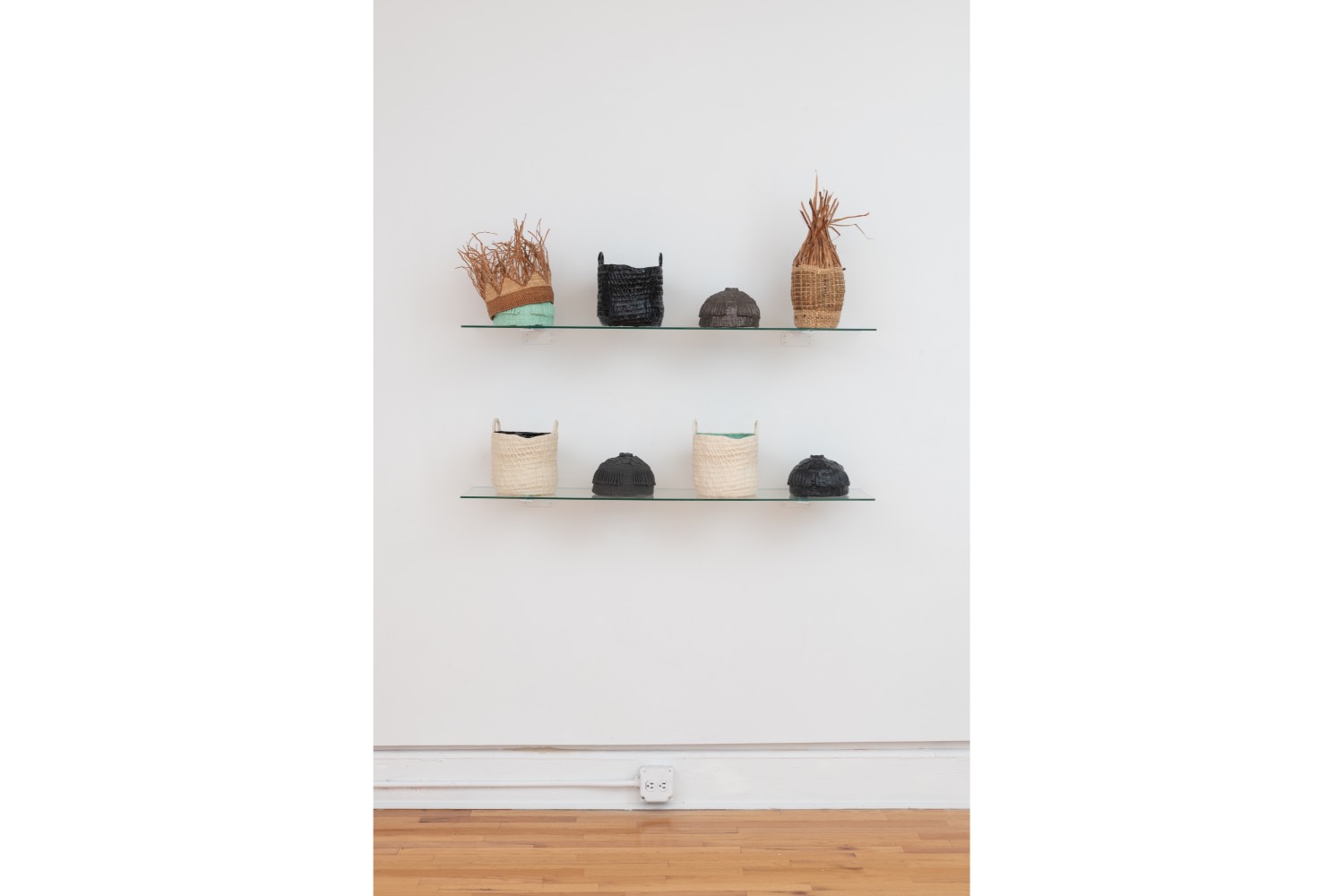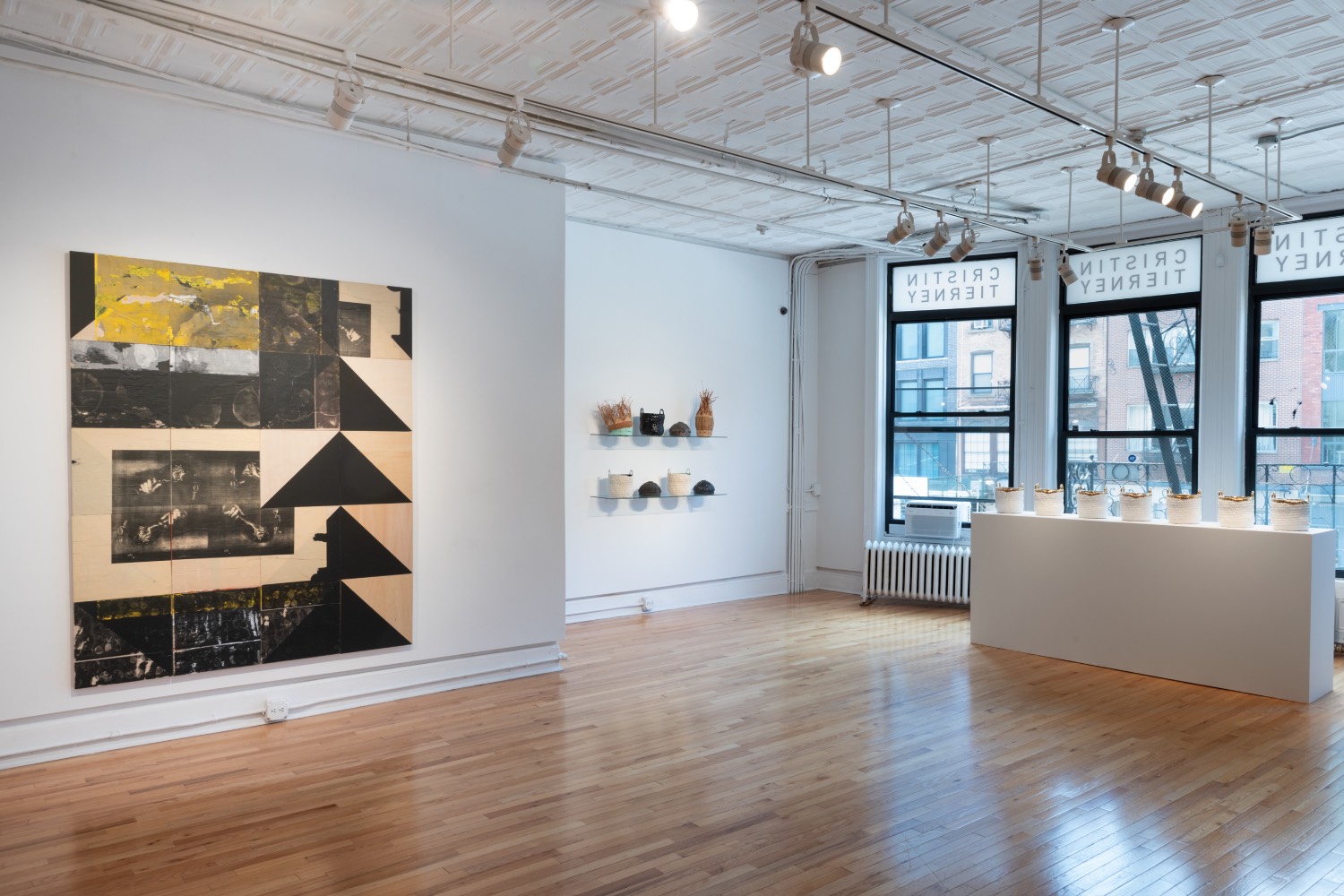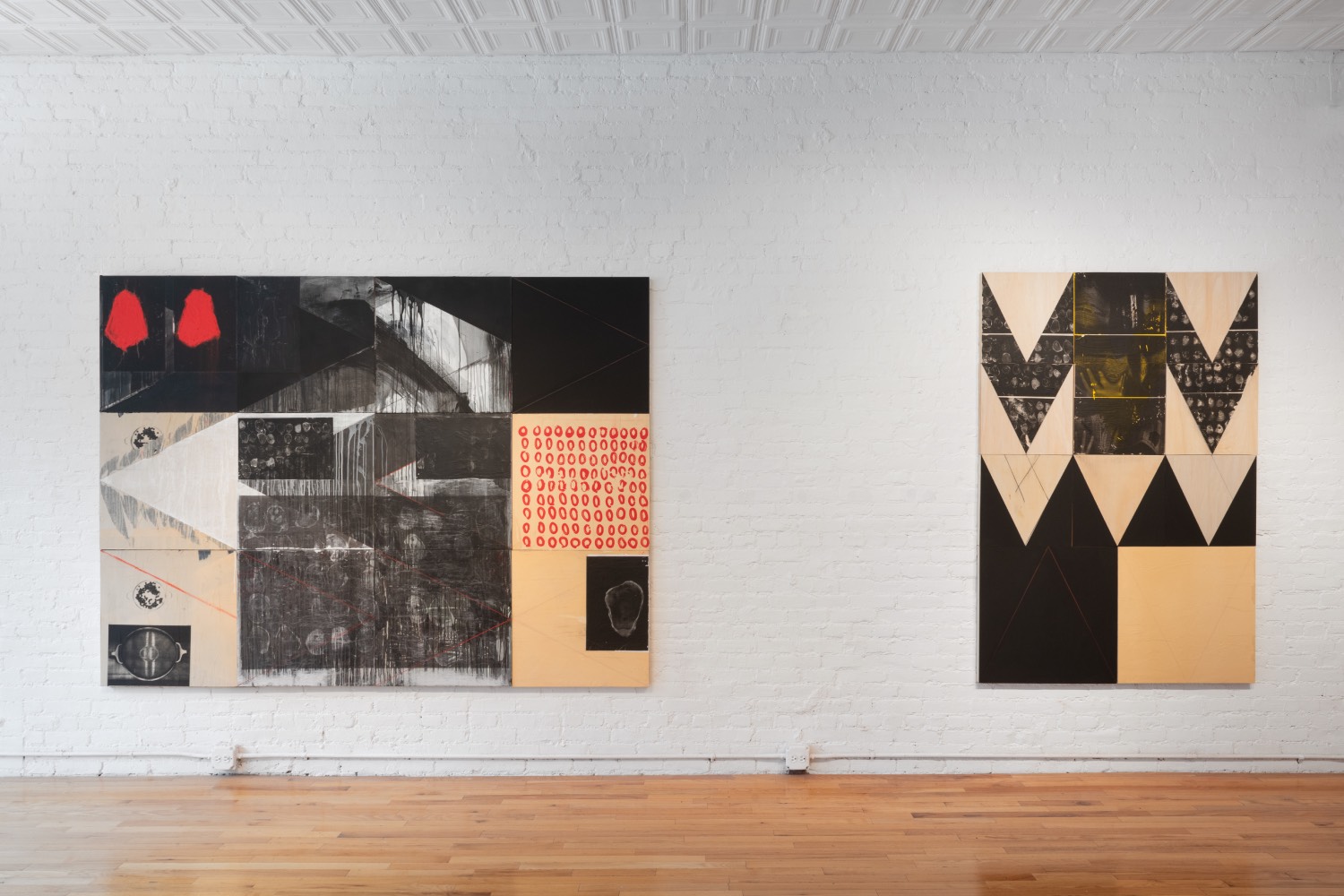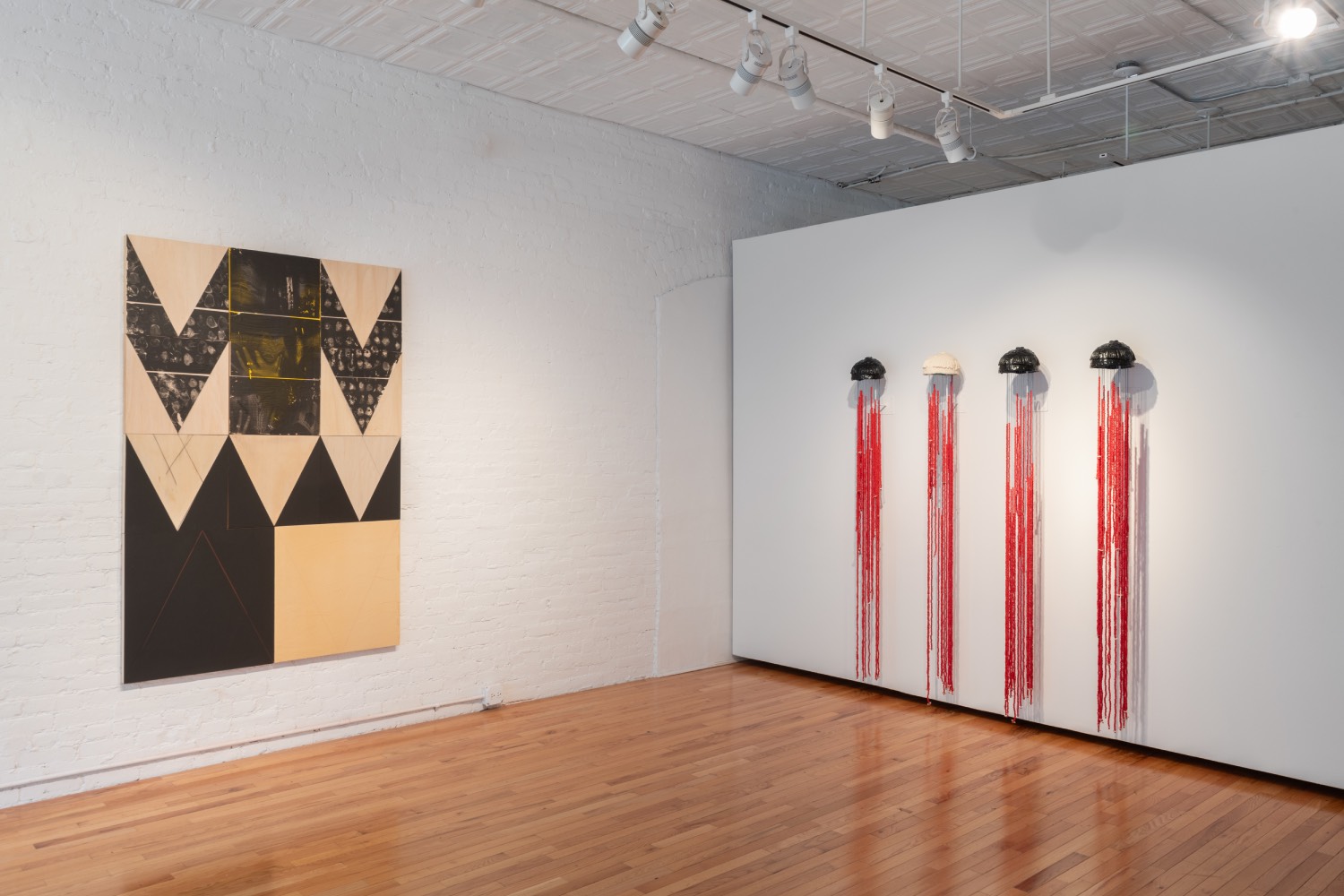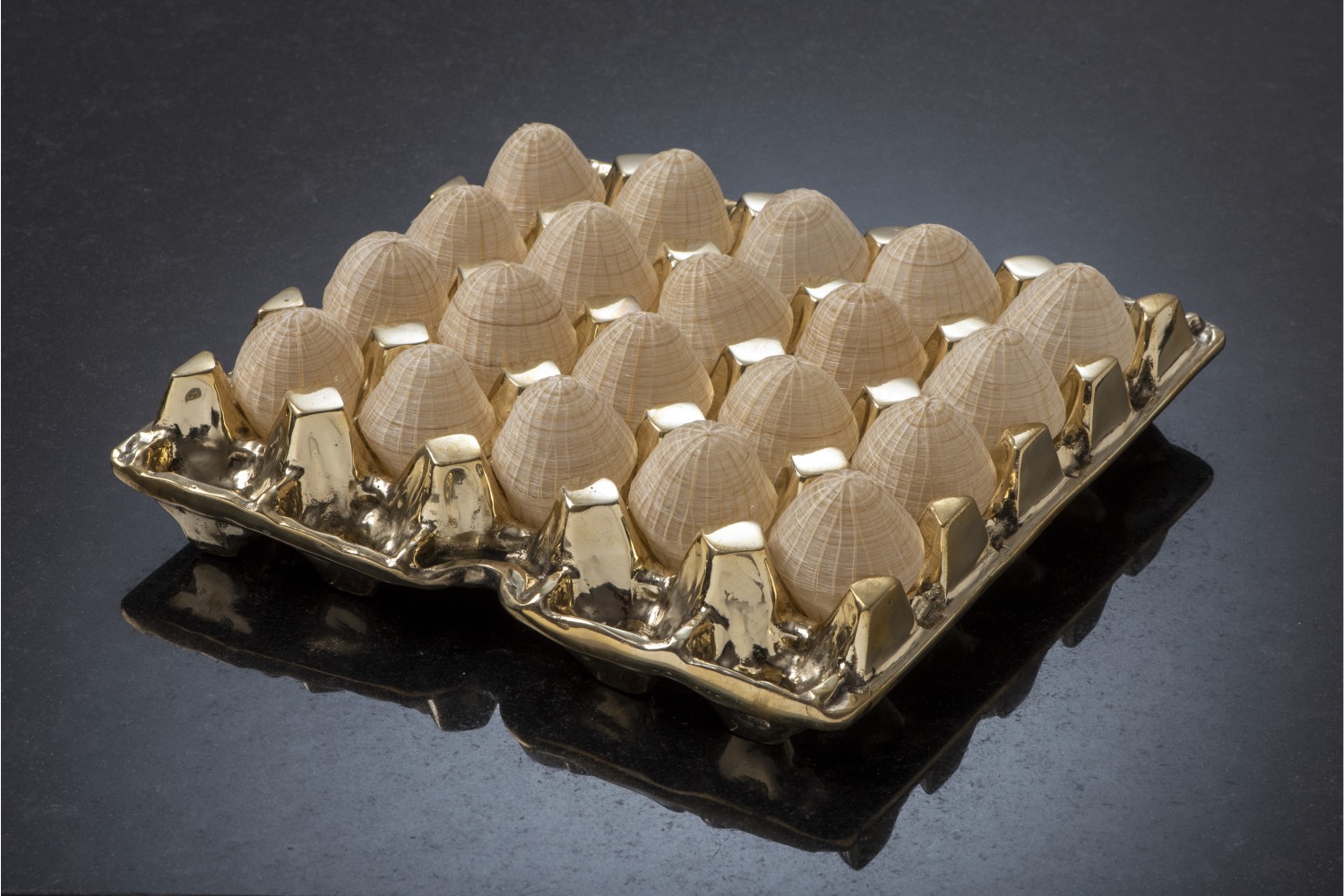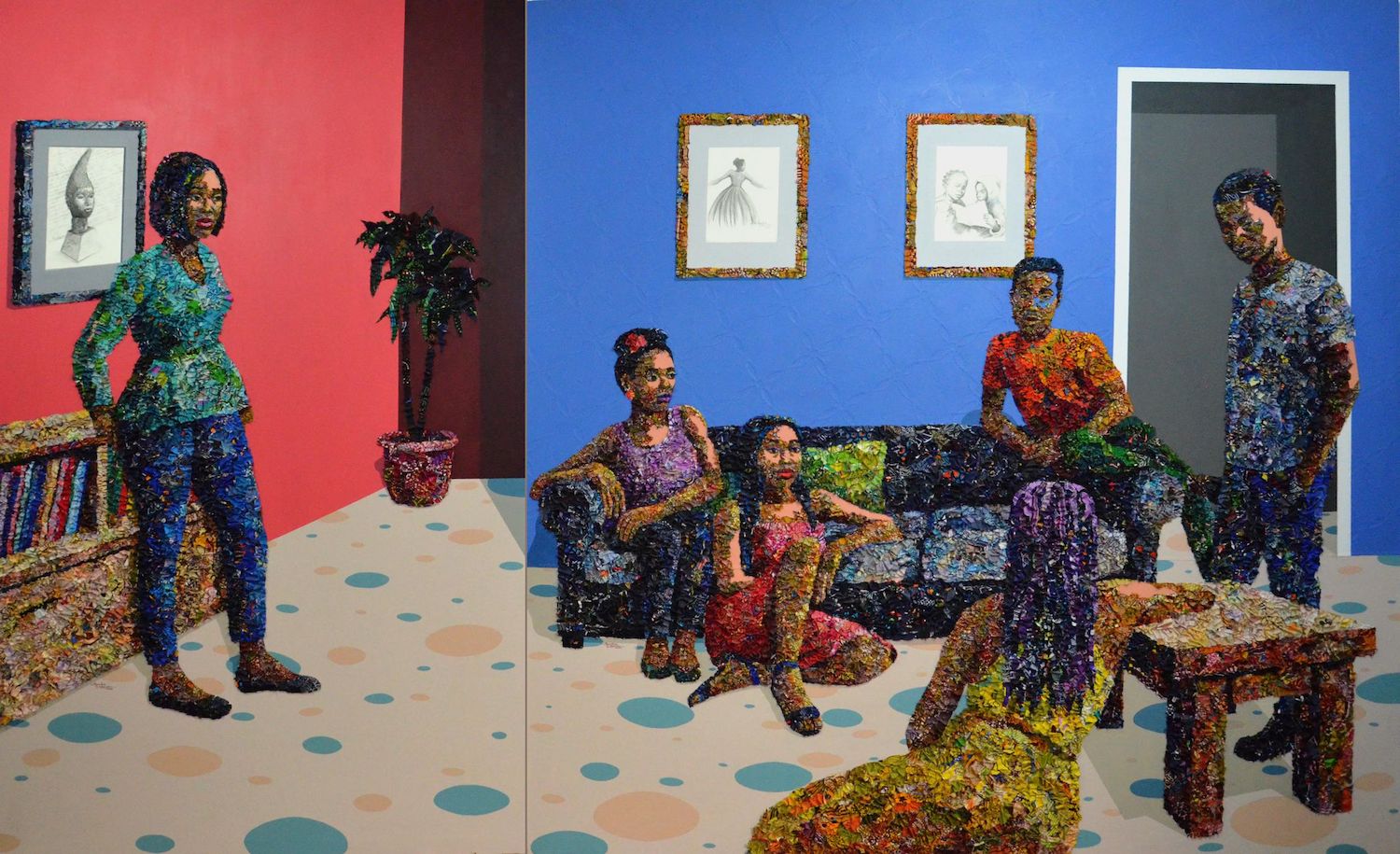Having climbed the stairs to Sara Siestreem’s solo show “milk and honey” at Cristin Tieren Gallery, viewers will be made all the more breathless by the artist’s striking works in hues of red, black, white, and gold. Images of shells in one work reference the place of origin of both a now-extinct oyster species and the artist — the Umpqua River Valley of the southern Oregon Coast — and bring to mind Joni Mitchell’s 1971 song “River”: “Oh, I wish I had a river / I could skate away on / I made my baby cry.”
As if set in motion by Mitchell’s lyrics, strands of red beads radiate, animate and eerie, from ceremonial ceramic hats in 3/15/2020 minion (2024). The sanguinary imagery, particularly the implied heads, evokes the heinous practice of scalping, promoted by the US government among settlers to expedite colonialization, including in Coos Bay. These hats, typically worn by women, also suggest hair, which for many Native American tribes symbolizes the human connection to the earth — the longer the hair, the closer to the Great Spirit. Siestreem synthesizes ecology, spirituality, violence, and femininity with curious cohesion.
To its left, oh but the keynote (ROSES) (2024) is a wall piece composed of three natural wood panels overlaid with a chevron motif drawing from Hanis Coos basket weaving. The left and right chevrons are Xerox photo transfers of oyster shells Siestreem found on the banks of Oregon’s Coos and Millicoma Rivers. These panels frame a central block of three equally dim photographs of hands weaving and caressing baskets. These two elements of Hanis Coos life are similarly fundamental to its functioning. The baskets are tightly woven to avoid spilling the liquid or bodies of these watery creatures between the riverbank and the fireplace, while the mollusks themselves once sustained Siestreem’s people. This work is a commentary on capitalism – the stylized V-shape, an abstraction of a Hanis Coos design, reflects a broader American practice of standardizing Native art for mass production and appeal. Urban Outfitters and Pendleton are well-known for this convention. The superimposition of bivalve, basket, and hand images confers spirit upon this otherwise generic concept, perhaps implying Siestreem is haunting unassuming customers of mass-produced Native design.
Edging toward the large street-facing windows, un-ring bells (2013–24) is a monumental piece that merges elements of the first two works across eight wooden panels arranged into one rectangle. The top-right square features red outlines of oyster shells — nine tall and twelve wide — while the bottom-left displays a black-and-white photograph of a pot with an eye’s reflection overlaid on the water’s surface tension. Above it, a negative image of the pot is lined with black circles, either shells or coins. In the four center squares, a turbid array of shells is suspended over faint chevrons drawn in black and red, all facing west. A deluge of white and black paint, like milk and tar (or maybe honey, per the show’s namesake), cascades over the shells and chevrons toward the floor. The colors, imagery, and orientation suggest the death of the oysters and the symbiotic relationship between them, the Hanis Coos, and the river, implicating climate change and settlers coming west.
The seven matte-white ceramic baskets crowned with gold in skyline (2024) are another example of Siestreem’s critique of capitalism, and highlight the versatile utility of translating historical objects into Western modernity through different artistic techniques. Previously marked by plant-based materials and symbolism as Indigenous, the baskets become pleasant yet banal. The number and horizontal arrangement of the baskets on a rectangular pedestal suggest the objectification and stasis of a typically mobile and vital object in the Hanis Coos lifestyle.
Thinking about transition and the lyrics to “River” — “They’re cutting down trees / They’re putting up reindeer / Singing songs of joy and peace” — conjures a changing landscape and Western religious iconography that the Hanis Coos people likely perceived as utterly alien.
The work mint (2017–22) seemingly contrasts this theme of longing to travel to the past —“I wish I had a river so long / I would teach my feet to fly.” The humorous piece is a literal “hat on a hat.” The phrase recalls a conversation between Bill Hader and Seth Meyers on his eponymous late-night show, where the former described learning from the TV show host at Saturday Night Live this concept of layering a joke on a joke to ill effect. This final moment of levity in “milk and honey” feels timely in October; the ghosts of the Hanis Coos people’s past contained in Sara Siestreem’s work are not sad – they are having the last laugh.


